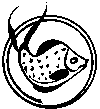 |
| Turiang |
25 Feb 2001
|
|||
| Last modified: 25 Feb 2001 |
The Turiang's multinational ceramic cargo is of great interest, as it represents a variety of export wares sourced from different countries at one point in time. The absence of Chinese blue-and-white porcelain is as interesting as the presence of Chinese celadon. The presence of both Sukhothai and Vietnamese underglaze iron-decorated ceramics together with early Si-Satchanalai ware is an interesting combination, and suggests a number of questions about 14th century Asian trade patterns.
Only representative samples of each type of ceramics have been recovered. The following table shows the estimated size and breakdown of the cargo remaining at the Turiang site at the time of discovery. It includes the 1,135 articles brought to the surface, and those still on the seabed, but not those pulled away by fishing nets. As much as 30% of the original cargo may have been lost in this manner.
| Ceramic pieces of each type | Number | % |
| Thai: Sukhothai - underglaze decorated plates | 2,500 | 46% |
| Thai: Sukhothai - other underglaze decorated ware | 500 | |
| Thai: Si-Satchanalai - early blackish brown-glazed ware | 100 | 11% |
| Thai: Si-Satchanalai - early underglaze decorated ware | 100 | |
| Thai: Si-Satchanalai - early green-glazed ware | 500 | |
| Thai: Si-Satchanalai - early glazed stoneware jars | 30 | |
| Thai: Suphanburi - storage jars | 5 | |
| Vietnamese: underglaze decorated bowls | 500 | 8% |
| Chinese: Guangdong - monochrome bowls | 500 | 35% |
| Chinese: Guangdong - green-glazed saucers | 700 | |
| Chinese: Guangdong - brown-glazed storage jars & bottles | 40 | |
| Chinese: Guangdong - other brown-glazed ware | 800 | |
| Chinese: Longquan - celadon | 200 | |
| Estimated pieces in cargo at time of discovery | 6,475 | 100% |
Many of the ceramics are badly deteriorated, as is normal with shipwrecks. About 80% have deteriorated beyond meaningful display and research condition. The underglaze Si-Satchanalai decorated wares seem to have deteriorated more than their Sukhothai counterparts, and may have been underfired in the first place - one of many early examples of sub-standard products in the long history of Asian trade.
Three Thai production centres are represented on the Turiang: in order of their proportionate importance, as seen from the table, Sukhothai (an estimated 46% of the total cargo, by volume), Si-Satchanalai (11%), and Suphanburi (a few storage jars). Two earthenware cooking pots are of unknown origin but categorised for the time being as Thai. Chinese ceramics represent an estimated 35% of the cargo, and Vietnamese pieces 8%.
| Turiang overview | Maritime Asia homepage | Next: Sukhothai ceramics on board |